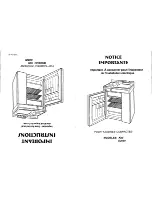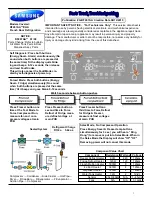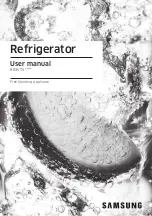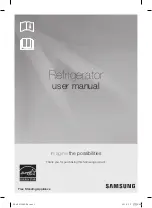
^
Check whether the metal grille (heat
exchanger) at the rear of the appli-
ance has become dusty.
^
The refrigerator and freezer section
doors have been opened too fre-
quently, or a large amount of fresh
food has been put in at the same
time for freezing.
^
Check that the doors have been
properly closed.
^
Check to see whether a thick layer of
ice has built up in the freezer section.
If it has then the freezer section will
need defrosting.
. . . the frozen food is thawing be-
cause the freezer section is too
warm.
^
Is the room temperature lower than
the ambient temperature for which
the appliance is designed?
Increase the room temperature, or
switch on the winter setting.
Operating in a room which is too cold
will cause the cooling system to switch
off for too long causing the freezer sec-
tion to become too warm.
. . . food has frozen together.
Use a blunt instrument, e.g. a spoon
handle or plastic scraper to carefully
prise it apart.
. . . there is a thick layer of ice in the
freezer section.
^
Check whether the freezer section
door closes properly.
^
Defrost and then clean the freezer
section.
Too thick a layer of ice reduces effi-
ciency and increases energy consump-
tion.
. . . the interior light in the refrigerator
section is not working?
^
Has the contact switch got stuck?
^
Make sure that the temperature dial is
not pointing to the "0" position.
If it is not pointing to the "0" position
the bulb is defective:
^
Disconnect the appliance from the
mains. Switch off at the wall and with-
draw the plug from the socket (pull
by the plug not the cable), or discon-
nect the mains fuse or remove the
screw-out fuse in countries where this
is applicable.
^
Reach into the back of the light cover,
press upwards at the side
a
, and
then pull the cover off
b
.
^
Replace the bulb.
Bulb specification:
220 – 240 V, max. 15 W, E 14 fitting
^
Push the cover securely back into
position.
Problem solving guide
25












































